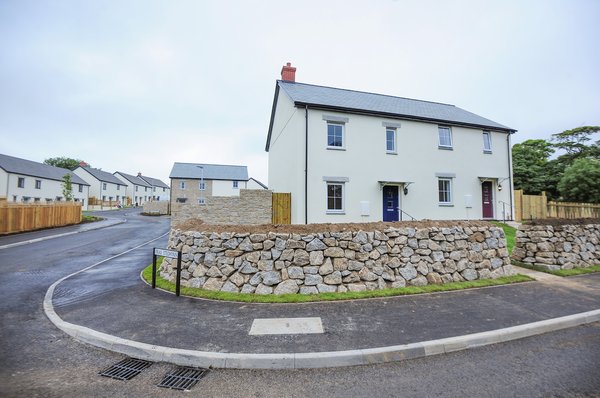“We are at risk of having an age-segregated society where young people live in cities and old people live in the country.” Allister Young, CEO of Coastline Housing, talks in this opinion piece about the significant implications of a society divided into young and old – not by choice but by circumstance – and how new housing could be the key to bridging the gap.
It doesn’t always feel like it out and about in parts of Cornwall, but we operate in a very rural county. Two out of every five people in Cornwall live in a settlement of less than 3,000 people. As a result, most people feel very connected to where they live, and local issues are very important. So it’s probably not surprising that sometimes (often?) when we’re trying to build new affordable homes in Cornwall, there can be a lot of strong local opinion.
We’ve seen this recently with our proposed schemes in Portreath and Veryan, where vocal local groups have raised concerns about ecology (particularly at Portreath) and, well, just not wanting new homes to be built (Veryan).
When people are objecting to new housing being built, they often argue that new homes put pressure on stretched local ‘infrastructure’, like schools and GP surgeries. What is less well understood is that housing often (through requirements imposed through the planning system) makes direct financial contributions to this infrastructure. The problem being that this improvement in infrastructure follows after the housing, rather than being put in first.
Another thing that is often overlooked is the vital role new affordable housing can play in making smaller communities viable.
We’ve heard from people in St Cleer that our new scheme has brought vibrancy to the village, and helped the local primary school and pub to thrive. Contrast that to what was said by a local councillor who spoke in favour of new housing in Veryan: “If you take Portloe, there are 90 properties in the old village and there is just one child living there. We don’t want Veryan to slip away like Portloe has done in recent years”. That’s right: 90 homes, and one child.
And it’s also worth stepping back from Cornwall just for a second, and thinking about the country as a whole. I suspect most of us would agree that over time we seem to be becoming more divided as a society.
I read a report recently that analysed this, and found that there is a significant divide between rural areas and urban areas (the report is called ‘No Country for Young People’).
The report sets out analysis showing that the average age in rural areas has increased by twice as much as the average age in urban areas in the last 20 years, and that we are at risk of having an age-segregated society where young people live in cities and old people live in the country.
This has significant implications. Rural schools will close. Businesses in rural areas will struggle to recruit and grow. Older people in rural areas will struggle to get the care and support they need. And it is also thought that this segregation contributes to political polarisation, as young and old people with different political views become less likely to interact with each other.
If you like graphs (which I do!), the two graphs below tell a story. The one on the left shows how much more quickly the average age is rising in rural areas, and the one on the right shows that the average age in urban areas is now under 30, whereas in rural areas it’s over 50. The result is that more and more areas are older than the average, more and more are younger than the average, and fewer and fewer are representative of our wider society.

But as I often say in these opinion pieces, what should we do? What is a potential practical solution?
Well, it would seem that building new affordable housing in rural areas would be a good thing. And that’s not just my opinion. The writers of the report say government should “implement policies to increase the availability of affordable housing options in rural areas, enabling young people to establish their lives and families there”.
Sounds sensible to me, we’ve certainly seen in places like St Cleer that our new housing has given families somewhere to live, and brought different generations of families closer together. So we’ll keep at it, despite the objections we often face, and keep trying to deliver vital affordable housing in rural places like Portreath and Veryan.
